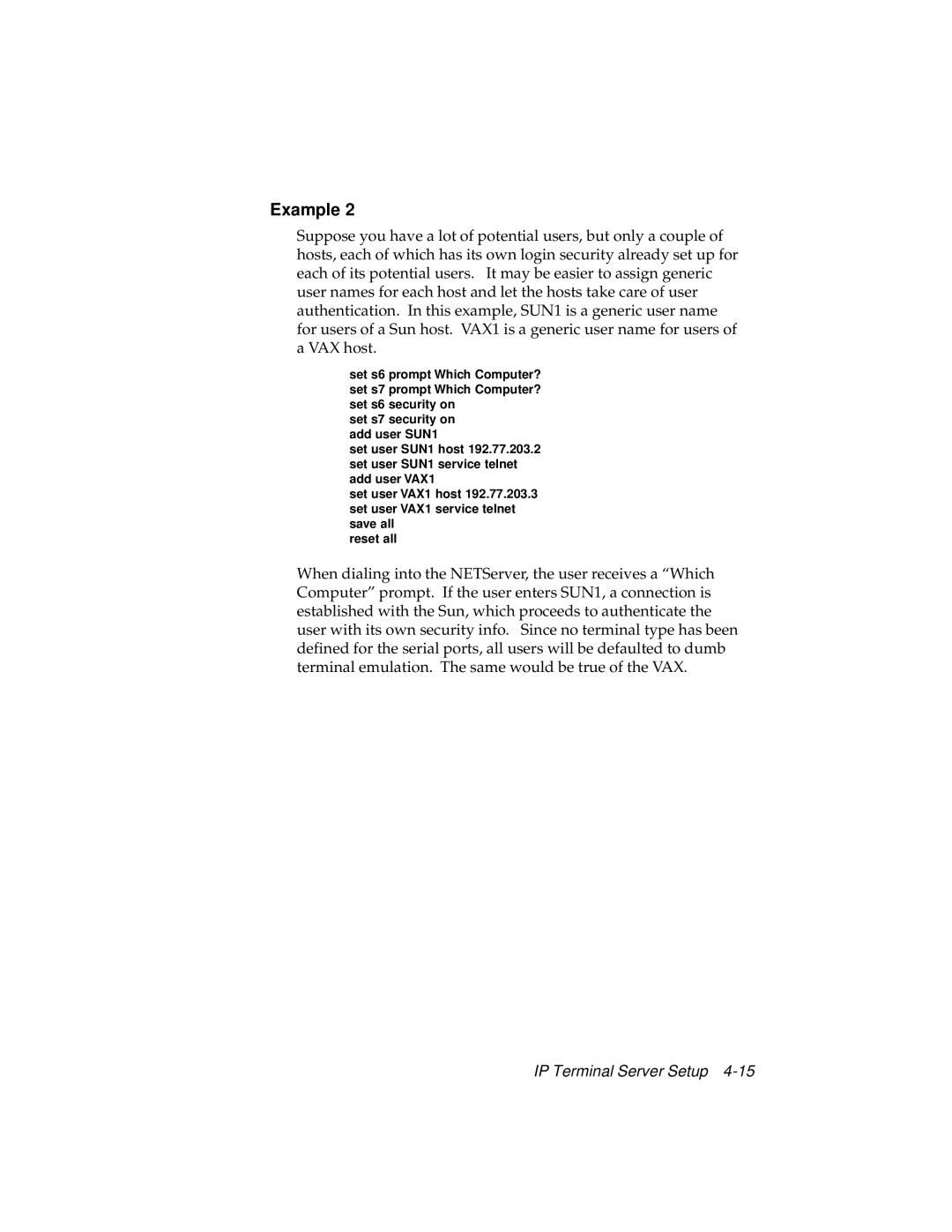Example 2
Suppose you have a lot of potential users, but only a couple of hosts, each of which has its own login security already set up for each of its potential users. It may be easier to assign generic user names for each host and let the hosts take care of user authentication. In this example, SUN1 is a generic user name for users of a Sun host. VAX1 is a generic user name for users of a VAX host.
set s6 prompt Which Computer? set s7 prompt Which Computer? set s6 security on
set s7 security on add user SUN1
set user SUN1 host 192.77.203.2 set user SUN1 service telnet add user VAX1
set user VAX1 host 192.77.203.3 set user VAX1 service telnet save all
reset all
When dialing into the NETServer, the user receives a “Which Computer” prompt. If the user enters SUN1, a connection is established with the Sun, which proceeds to authenticate the user with its own security info. Since no terminal type has been defined for the serial ports, all users will be defaulted to dumb terminal emulation. The same would be true of the VAX.
